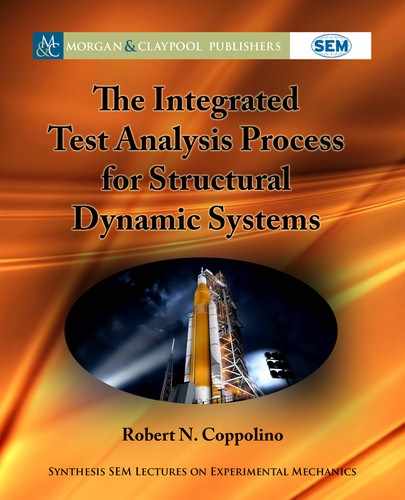
7
C H A P T E R 2
Definition of Test Article
Finite Element Models
2.1 PART 1: VARIATIONAL FOUNDATIONS OF MODERN
STRUCTURAL DYNAMICS
2.1.1 INTRODUCTION
e development of mathematical physics, of which structural dynamics is a branch, owes its
present state to two general viewpoints. e first viewpoint due to Newton [1] sees nature fol-
lowing postulates describing the dynamic equilibrium of interacting bodies. e second view-
point, due to d’Alembert [2], Hamilton [3], and Lagrange [4], sees nature following postulates
describing efficient organization of energies (variational principles). e variational viewpoint,
specifically Hamilton’s principle, has guided the development of partial differential equations
and natural boundary conditions for technical structural theories [5, 6].
Difficulties encountered in the quest for exact solutions of partial differential equations,
subjected to natural boundary conditions, led to the introduction of approximate techniques
based on Hamilton’s principle. Ritz [7] employed assumed shape functions and generalized co-
ordinates to deduce mass and stiffness matrices, which are foundational to the FEM [8] and Ma-
trix Structural Analysis [9]. Galerkin [10] similarly applied assumed functions to a variational
integral associated with a system’s partial differential equations; his formulation, while influential
in development of the FEM, has also been applied to solve nonlinear dynamic problems [11].
Trefftz [12] introduced a novel variational technique focusing on approximate satisfaction of
natural boundary conditions, which are a byproduct of Hamilton’s principle; his employment
of shape functions that automatically satisfy the system’s partial differential equations forms a
basis of the boundary element method [13].
Hamilton’s principle and the Ritz method, in particular, have been instrumental in the
development of both the FEM and Matrix Structural Analysis. e basic building blocks of the
FEM are most often developed on the basis of assumed boundary displacement referenced and
optional interior displacement shape polynomials, which are used to define element mass and
stiffness matrices based on the Ritz method. Assembly and analysis of structural system models
falls in the category of Matrix Structural Analysis, which for a time before general acceptance
of the FEM employed a force (degree of freedom) method.
..................Content has been hidden....................
You can't read the all page of ebook, please click here login for view all page.
